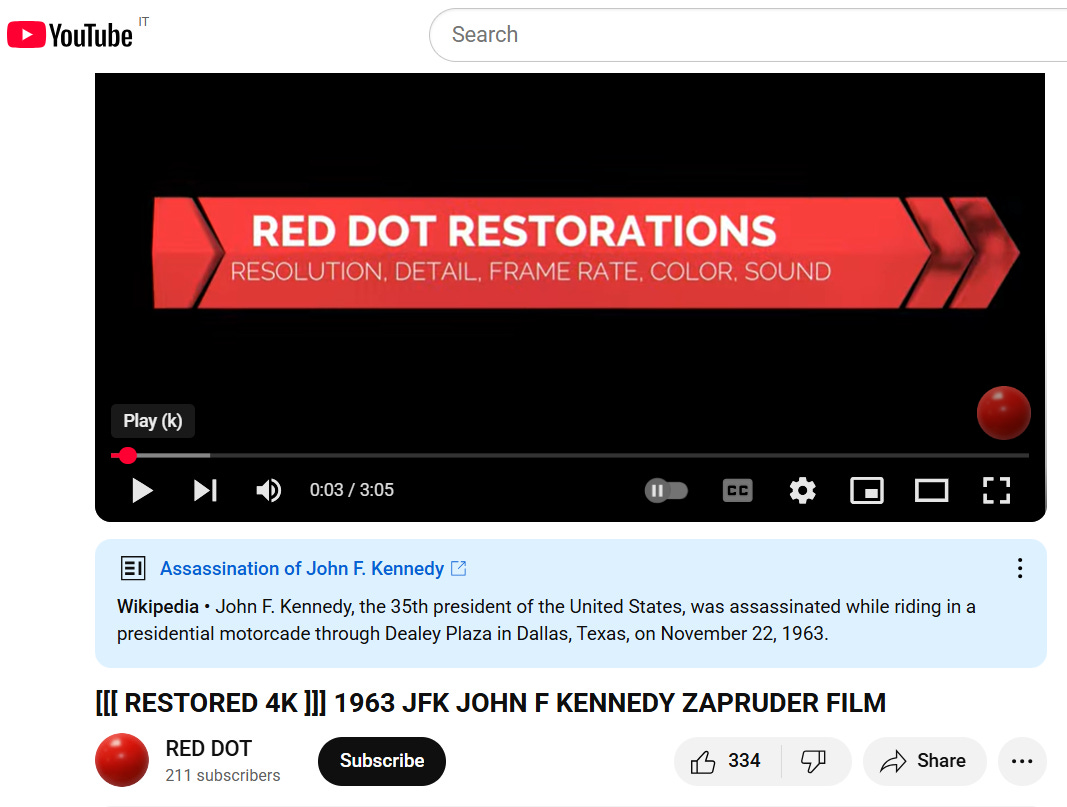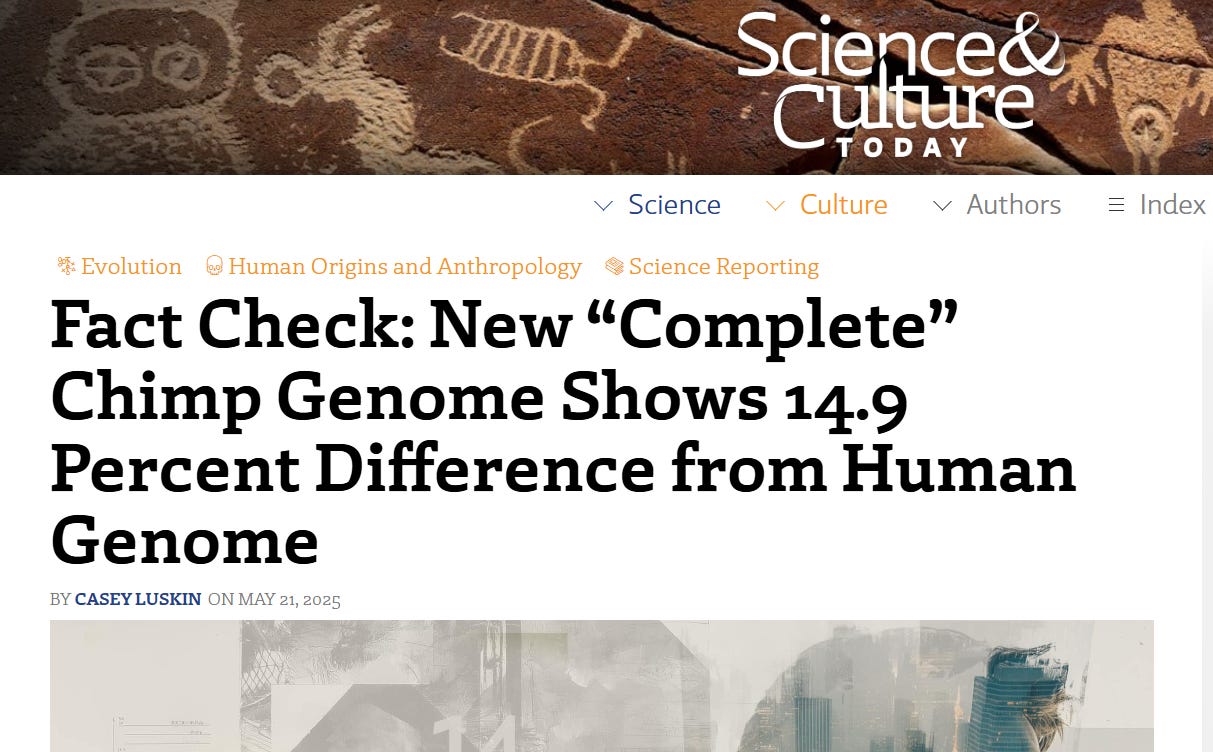Filling in the gaps: The connection between photographic upscaling, genetic sequencing, and the “finding” of SARS-CoV-2
Whilst perusing X, Jonathan was struck by a post promoting a restored 4K version of the Zapruder film of the assasination of JFK:
Viewing the scene naturally raises the following question: How are such restorations actually done? How can a higher resolution image be created than the one originally captured?
The process clearly involves adding more pixels, and essentially “guessing” what these contain using some pre-conceived (and today AI-driven) notion of what might have been there if the camera had been able to capture it.
The same applies to film colourisation (or colorization in American usage) which was all the rage a few years ago, but has since lost favor, being an example of “presentism”, imposing a set of contemporary beliefs, assumptions, and values onto the past.
Beyond the fact that the output rarely looks real, people seem instinctively to sense there’s something wrong with making guesses and presenting them as “the truth”. Interestingly, good archeological practice demands that “restored” elements of structures are easily identifiable (by the use of colour or texture) as non-original.
In a blog post discussing various aspects of “upscaling”, the author James Theopistos says this, which we found particularly particularly interesting:
At FinerWorks, we have been testing AI-driven image enlargements to help artists who might have only lower-resolution image files of their artwork but need print-worthy versions. Right now we are not getting consistently good results and here are some of the things we have seen in testing this first hand.
Possible Replacement of Original Details: Since AI upscaling generates new details based on patterns it has learned, it may add or modify parts of an image that weren’t originally there but thought they should be. This can be a problem for images where showing original detail is important. For instance, the shadow of a man’s upper lip could be mistaken for a mustache.
The process, and the associated problems, reminds us of genomic sequencing technologies. There too, machines fill gaps, ambiguities, and unknowns by “guessing” from prior patterns and models, a process computer scientists call “imputation”. The result can look or seem reasonably authoritative, even precise, but it remains a reconstruction – an inference presented as truth.
Elucidation of “the sequence” (initially 2019-nCoV, later SARS-CoV-2) and the making of “a test” began with:
authors of an early testing protocol endorsed by the WHO saying they “relied on social media reports announcing the detection of a SARS-like virus” and “assumed” a SARS-like virus was involved in the “outbreak” reported by Chinese authorities
“sequence alignment” (to known viral sequences) of all the various bits of genetic material found in the brochiolar lavage samples obtained from the subject or subjects.
We and others have questioned the order of events and methods employed in these enterprises1. In essence, it looks very much to have been a process whereby pre-existing assumptions were used to “fill in gaps” and “correctly order” the fragments found.
One can perhaps think of the social media reports and the “hint” to look at SARS-like viruses as being given the film footage and a segment to look at, and being asked whether they support a particular scenario or theory.
Unsurprisingly, a SARS-like virus was confirmed. Because SARS sits on the WHO’s International Health Regulations (2005) list of notifiable diseases with potential to trigger a Public Health Emergency of International Concern (PHEIC), we must ask whether establishing the virus's SARS identity was a priority from the very beginning.
It is curious that the role and relevance of the “social media” sourcing remains one which nobody on any side of the “covid debate” appears willing to address.
The “Corman-Drosten” Review, a critical analysis (of the protocol outlined by the above paper) by 22 scientists published in late November 2020, makes no mention of it. One would have thought that the fact that the entire sequencing and test development process was driven by such an assumption would have been a vital one to explore further, if not mentioned and addressed as the very first “fatal flaw” of the protocol design.
This could well be deliberate, or otherwise a reflection of the fact that the proponents of sequencing technologies simply don't appreciate the extent of the biases introduced by the decision as to which “template” is used.
An interesting recent practical example
This article published a few months ago reports on a paper in Nature:
The article advances the following argument:
The previously accepted trope that “genetically humans differ from chimps by only 1%” looks like it may have been wrong, and not just by a little bit, but hugely so - with real differences now measured at aroud 15%
The cause of this was that the chimp genomes were not, in fact, fully sequenced before.
Instead, they were assembled, using the human genome as a reference, “which made the ape genomes look more human-like than they actually were.”
Quoting from the article (with our emphasis):
A groundbreaking paper in Nature reports the “Complete sequencing of ape genomes,” including the genomes for chimpanzees, bonobos, gorillas, Bornean orangutans, Sumatran orangutans, and siamangs. I noted this in an article here yesterday2, reporting that an evolutionary icon — the famous “1 percent difference” between the human and chimp genomes, touted across the breadth of popular and other scientific writing and teaching — has fallen. The researchers, for whatever reason — I’m not a mind reader — chose to bury that remarkable finding in technical jargon in their Supplementary Data section. Now for more on the scientific details.
You might be thinking, “Hey, weren’t these genomes sequenced long ago?” The answer is yes but also no. Yes, we had sequenced genomes from these species in the past, but, as the paper explains, “owing to the repetitive nature of ape genomes, complete assemblies have not been achieved. Current references lack sequence resolution of some of the most dynamic genomic regions, including regions corresponding to lineage-specific gene families.”
Or, as an accompanying explainer article puts it:
In the past, scientists had deciphered segments of non-human apes’ genomes, but they had never managed to assemble a complete sequence for any species. In the current study, however, [Kateryna] Makova and her collaborators used advanced sequencing techniques and algorithms that allowed them to read long segments of DNA and assemble them into a sequence that stretched from one end of each chromosome to the other, without any gaps. “This has never been done before,” says Makova.
In other words, the complete ape genomes were never fully sequenced. And they used the human genome as a reference sequence, which made the ape genomes look more human-like than they actually were.
Predictably, there was considerable pushback from “establishment science” against that critique - see here, and here, for example. The author responded by updating the offending figure - and adding commentary under it - in his original article, and also with this piece in which he accused his critics of “changing the subject”.
Without delving too deeply into the rights and wrongs of the various positions on the “correct” way of measuring genetic similarities between species3, it does seem clear that we actually understand very little about the functional significance of any observed - or calculated - genomic differences; this stands in stark contrast to the certainty of many assumptions made about the genomic characteristics of viruses, especially in relation to “SARS-CoV-2”.
Conclusion
All in all, the issues with sequencing raised in this essay seem awfully similar to those seen with photographic “upscaling”.
Shouldn’t the same scepticism / warnings apply?
For example:
Marten, B. (2025, March 31). "Are Viral Genomics Evidence of Spread?" US Mortality. | Hockett, J., & Engler, J. (2025, February 19). "Did the Corman-Drosten Protocol 'rely on social media reports' to seek (& then find) SARS-CoV-2?" Wood House 76. | Neil, M., & Engler J. (2024, May 30) “Virus Origins and Gain (Claim) of Function research.” Where Are the Numbers?
In this article the author explains the huge implications of this finding for our view of human evolution.
The argument boils down to the validity of the counting method employed. Neukamm’s rebuttal paper summarises his position thus:
"In short, contrary to creationist claims, the established methods for measuring genetic similarity—such as the use of specific rules for handling alignment gaps—are well-founded and scientifically sound. These approaches are designed to account for the biological realities of genome structure and evolution."
This would appear to be somewhat circular, in that it is basically saying “our method is the right approach because it was designed to conform to our established understanding of biology”.










I am quite old at this point and am so disgusted and angry about the 1000s of lies I have been fed since my earliest childhood. All of us were raised on lies put out by textbook publishers/writers, authors of books, magazines, movie scripts etc. Television and radio writers and producers. Lies pushed by doctors and other medical people who passed on the lies they were taught and believed because they think they are so smart and scientific. Remembering the public school Biology book with the well-known illustration of the row of creatures beginning with the knuckle-dragging ape on the left walking behind the slightly more advanced and upright-standing ape walking behind the even more upright ape-creature and so forth until at the right of the drawing is the human being. THAT BIG LIE worked so well for THE BIG LIARS.
"Millions" were saved by the vaccine is predicated on estimates based on models.
The Ferguson model was one of the primary modalities used to declare a pandemic. A lot of running around in circles, wringing hands because it could cause 3% population decimation, should we not lock everyone down and stop the spread?
But at the time, they were basing these models on what? Some sort of exponential model they derived from watching The X-Files?
An argument I had been waiting for happened to me on X the other day.
Me: "Long Covid is a constellation of more than 200 symptoms that has yet to be linked or connected to Covid."
Them: "It has to be Covid, it says it in the name."